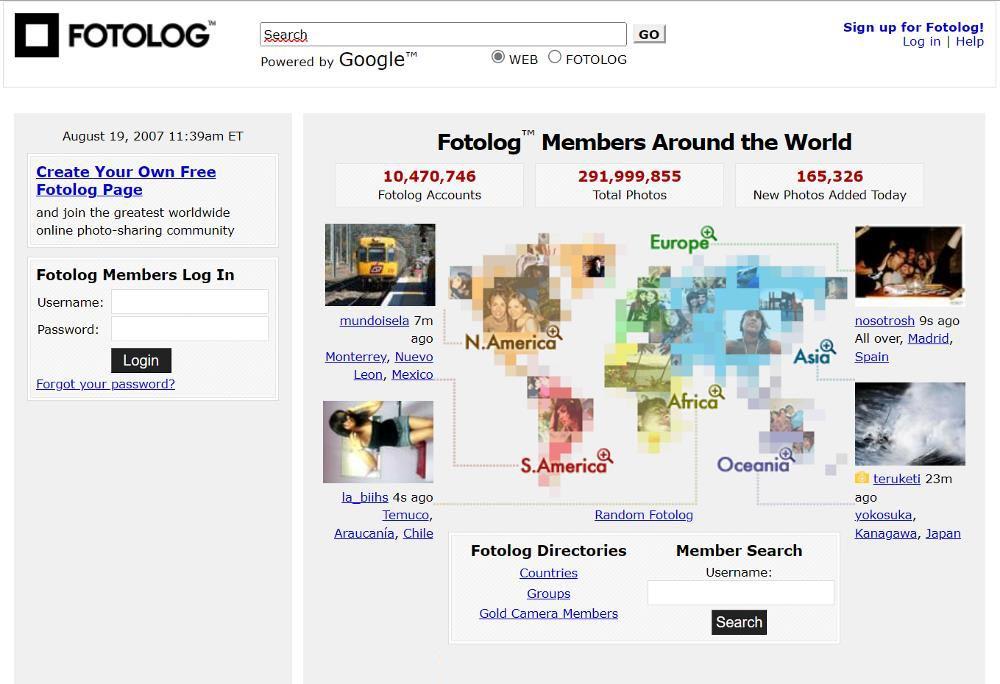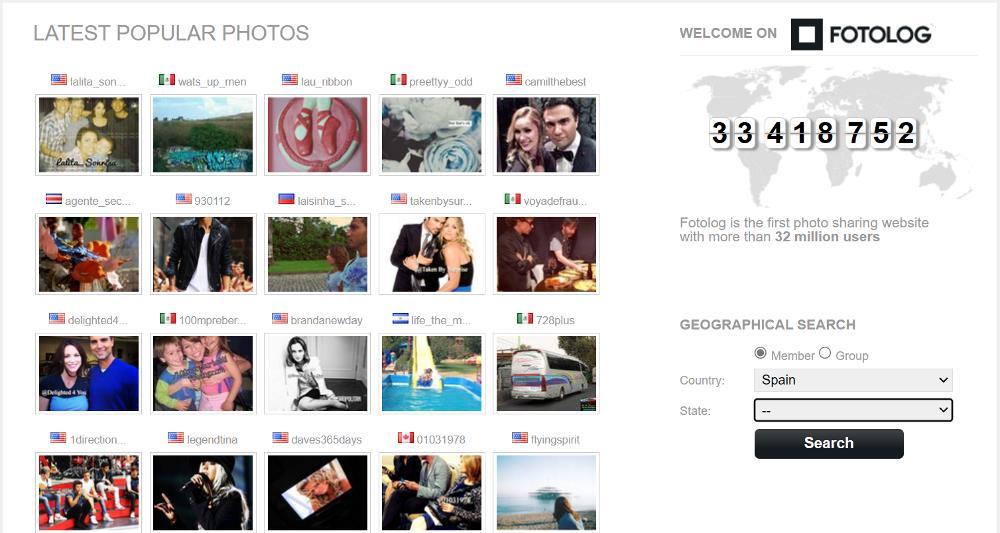Social networks are, today, the method most used by millions of users to stay in touch with friends and family. It is also a widely used method to be informed of the topics that interest you the most, although these are not the best option since one of the negative points of this type of network is misinformation. If we talk about the first social networks, we don’t have to talk about Facebook or Twitter, the oldest ones that still work today, but about Fotolog.
As we can well deduce from the name, Fotolog was a photo blog where anyone could post their photos. It is, we could say, and without fear of being wrong, the precursor of what years later would be Instagram.
Birth of the first social network of photographs
Fotolog.net was born in May 2002 as a social network for sharing photos, but as it grew and to reach a greater number of users, they changed the domain to Fotolog.com. As could be read in the description of this website, its mission was to build a social network focused on prioritizing the well-being of the users who used it.
The publications on this social network were made through groups of different themes, so it was very easy for users to access only the content that might interest them the most without having to navigate aimlessly, as is the case today on social networks. current.

Fotolog offered two types of accounts. On the one hand, there were the free accounts, accounts that showed ads to users, limited uploads to one image per day and the number of comments per post to only 20. The paid version allowed users to upload up to 6 images per day and have a maximum of 200 comments per post.
During the first years, each country had a maximum limit of users that could be registered, because the server infrastructure at that time had nothing to do with what we can find today. Starting in 2006, the company removed that limit upon receiving a significant investment from a venture capital firm.
As the years went by, Fotolog did not stop growing, despite the fact that both Facebook and Twitter were already in the market looking for market share in the segment of social networks that, at the time, Fotolog dominated. In 2007, the founding partners of Fotolog sold the company to HiMedia, an advertising company that wanted to take advantage of the growing pull of social networks at that time.
He did not know how to adapt
Despite being a company founded in New York, it was very successful in Latin American countries, mainly in Argentina and Chile, as well as in Spain, Italy and Portugal. Chile, where a fashion trend known as Flogger was born based on this social network, was the country with the highest number of accounts, with 5 million, followed by Argentina with 4 million and Brazil with 1.5 million.
Starting in 2010, Fotolog found a competitor that little by little was eating up ground: Instagram. The new owners of Fotolog rested on their laurels and kept coming late to everything. Applications for mobile devices took a long time to arrive, unlike Instagram, which was born with them under its arm. As the use of mobile phones increased, the use of Fotolog was falling.

In 2016, the company withdrew the applications available in the Play Store and the App Store, implying that the end of this veteran social network was very close. However, this was not the case and, although the social network continued to function only through its website, it had lost the interest of most users who had switched to other social networks.
In 2018, it announced a complete remodeling of both design and functions and at the beginning of 2019, it eliminated the payment plan, leaving only the free plan of uploading one photo a day, nonsense if we compare them with all social networks where there is no limit. file upload. As expected, months later the domain was sold to a domain auction company.
Currently, both the Fotolog.com domain and the Fotolog.net domain are blogs where they talk about technology, travel, health and business and have absolutely nothing to do with the social network that fell into disgrace for not knowing how to adapt to changing trends in the telephone industry.
Alternatives
The best-known alternative to Fotolog has always been Instagram, a social network of food images that knew how to adapt to market movements to reach a greater number of people and get away from that social network label of plates of food, the main source of Instagram content from its inception until it was compared by Facebook in 2012.













